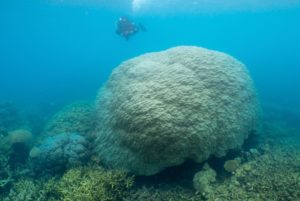by G. Müller-Plath, Nov 29, 2020 in WUWT
Introduction
The present paper contributes a critical commentary on the recent finding by Mann, M. E., Steinman, B. A. and Miller, S. K (2020). Absence of internal multidecadal and interdecadal oscillations in climate model simulations. Nat. Commun. 11, 1–9.
Climate oscillations are recurring large-scale fluctuations in the surface temperatures of the oceans in connection with the atmosphere. This commentary focuses on the Pacific Decadal Oscillation (PDO, interdecadal timescale) and the Atlantic Multidecadal Oscillation (AMO, multidecadal timescale), which have been regarded as intrinsic climate drivers on the adjacent continents in numerous studies based on observations and paleoclimate reconstructions (Henley, 2017; O’Reilly et al., 2017). In a recent paper, Michael E. Mann and colleagues (Mann et al., 2020, hereafter M20) fail to find a PDO signal in global measured and modeled temperatures that is statistically different from noise. They further propose that the significant AMO-like signal is mainly due to anthropogenic aerosols in the 20th century, and to statistical artifacts before. Therefore they doubt the intrinsic nature of the two oscillations. The present paper shows that M20’s results are largely artifacts themselves with issues ranging from using inadequate data and referencing improper literature on anthropogenic aerosols with regards to the AMO to inappropriately interpreting the results with regards to the PDO.
…
…
by J. Marohasy, Nov 29, 2020 in WUWT
Fundamental to science is measurement. It is a way of objectively assessing something, anything, even the state of a coral reef, even of an individual coral. Historically coral growth rates were measured by coring the really old massive Porites.
Like tree rings in temperate forests, the massive old Porites can be cored to see the banding and from this it is possible to calculate coral calcification rates which are a measure of the growth rate of individual corals.
Peter Ridd has been asking for some quality assurance of so many of the measurements relating to Great Barrier Reef health, including coral growth rates. Key Australian institutions have responded by stonewalling, and in the case of James Cook University, actually sacking him. After two rounds in the federal courts his appeal against his dismissal is finally going to the High Court of Australia, with the next hearing probably in February 2021. While the lawyers are preoccupied with Peter’s rights, or otherwise, to academic freedom and freedom of speech, my concern is whether Peter is actually telling the truth when he says that the Great Barrier Reef is resilient and definitely not dying from coral bleaching, though there is a problem with the integrity of the science.

…
…
by S. Furfari & E. Mund, 27 Nov 2020 in ConnaissanceEnergies
Nous assistons aujourd’hui à des conversations interminables sur l’« énergie » sans que ce dont on parle soit dûment précisé. Parle-t-on de l’énergie pour chauffer notre maison ou bien de celle nécessaire pour charger un véhicule électrique ? Ce n’est pas indifférent. Beaucoup ignorent les principes fondamentaux, alors que d’autres les connaissent mais évitent soigneusement d’en tenir compte.
L’un de ces principaux fondamentaux est la distinction entre « énergie primaire » et « énergie finale ». Précisons qu’il ne s’agit pas d’une vaine querelle de mots : une bonne compréhension a un impact fondamental en matière de choix de politique énergétique et d’adoption lucide de cette politique par les citoyens concernés.
…
…
Lorsque l’on ramène le poids des filières renouvelables intermittentes dans le bilan en énergie primaire de l’UE – l’indicateur fondamental lorsqu’on se préoccupe d’énergie, que ce soit pour les aspects géopolitiques, de balance des paiements et de décarbonation – leur part se limite ainsi à quelques pourcents. En 2018, ces énergies si populaires dans les médias n’ont ainsi compté que pour 2,5% de la consommation d’énergie primaire dans l’UE à 27 (1,4% en France, 1,8% en Belgique et 4,3% en Allemagne)…
La géologie, une science plus que passionnante … et diverse

